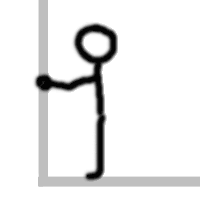I believe this thread validates what I have said many times before. There are so many armchair posters that just repeat what they have read in other forums or have read repeatedly of false viral information. They have good typing skills and a lot of time on there hands but nowhere near the knowledge of a MIT graduate. So all of us on here as BROS in the same family of minds as far as shooting accuracy goes. Lets get along and learn from who could be helping us.
I have had great luck with some of the Berger bullets and horrible experiences with others. They are no exception or god in the bullet community I believe that many hold them in their mind as the bullet to go to do to armchair posters. That is to bad. There are many other great options out there that would give their combination better results.
If Michael Courtney will respond I believe he to would, unbiased, agree that there is only one method to come the closest to correctly and repeatedly factoring the true BCs.....DOPPLER.. again,only one company uses this.
This post makes some good points. The best Doppler radars used in balistics measure velocity with an accuracy of 0.03%, which can then determine velocity dependent drag curves to an accuracy of 0.3% or so. I'm not sure I'd put Doppler ahead of what is possible at the ARL spark range at Aberdeen Proving Ground.
Sierra claims to be using Doppler for some of their bullets. Here are some links for ballistic radar using Doppler:
exterior ballistics
Ballistic Explorer Help
Lapua Offers Radar-Tested Drag Data for Lapua Bullets « Daily Bulletin
Lapua Offers Free Advanced Ballistics Software « Daily Bulletin
QTU Lapua Edition - Lapua Ballistics - Customer Center - Lapua
http://www.konyvtar.zmne.hu/docs/Volume11/Issue2/pdf/01.pdf
LabRadar - My Personal Radar
I would caution that not all Doppler radar works the same. The best, most expensive radars track the velocity and position in three dimensions at very short time intervals. Other Doppler radar (like used in speed traps and to measure velocities of baseballs, etc.) is one dimensional and only determines the component of velocity along one line. There is a new product coming out purporting to bring radar to shooters, but it remains to be seen how it works or how accurate is will be.
I'm not sure I will accept "determined with Doppler radar" as a guarantee of BC accuracy for several reasons:
1) The projectiles or data could be cherry picked. If you test 20 lots of bullets and they have a range of BCs and you publish the highest one, you have not really given your customers an accurate expectation of what they can expect if your lot to lot variation is big. Some bullets can have 5-10% shot to shot variations, so a result of only measuring 1-2 bullets may not be representative of the real mean. Did you know that in some cases the Litz BCs are only based on 2 shots of a given bullet?
2) The inexpensive product may not be as accurate as the military radars.
3) At some level, the ability to determine drag coefficients depends on the ability to determine air density accurately, which comes down to accurate measurements of pressure, humidity, and temperature. 0.5% is not too hard. 0.3% is much harder. But this is a detail that the experimenters must pay careful attention to. Using altitude rather than accurate temperature, pressure, and humidity readings can introduce a 5% error.
4) Misreferencing ICAO and Standard Metro atmospheric standards add about 2% error. Would you believe that some techs at the bullet companies don't know the atmospheric standard for their bullets?



